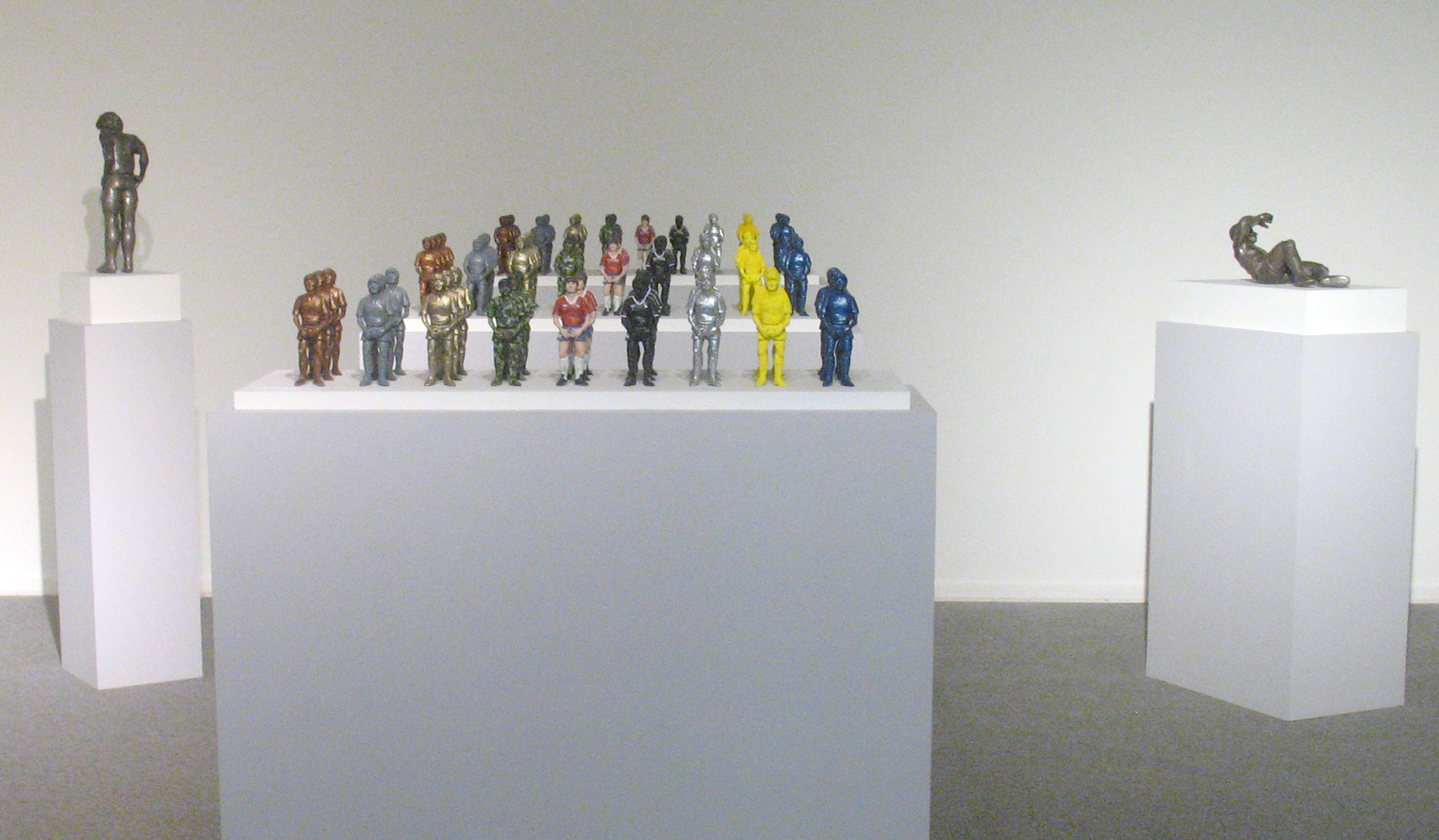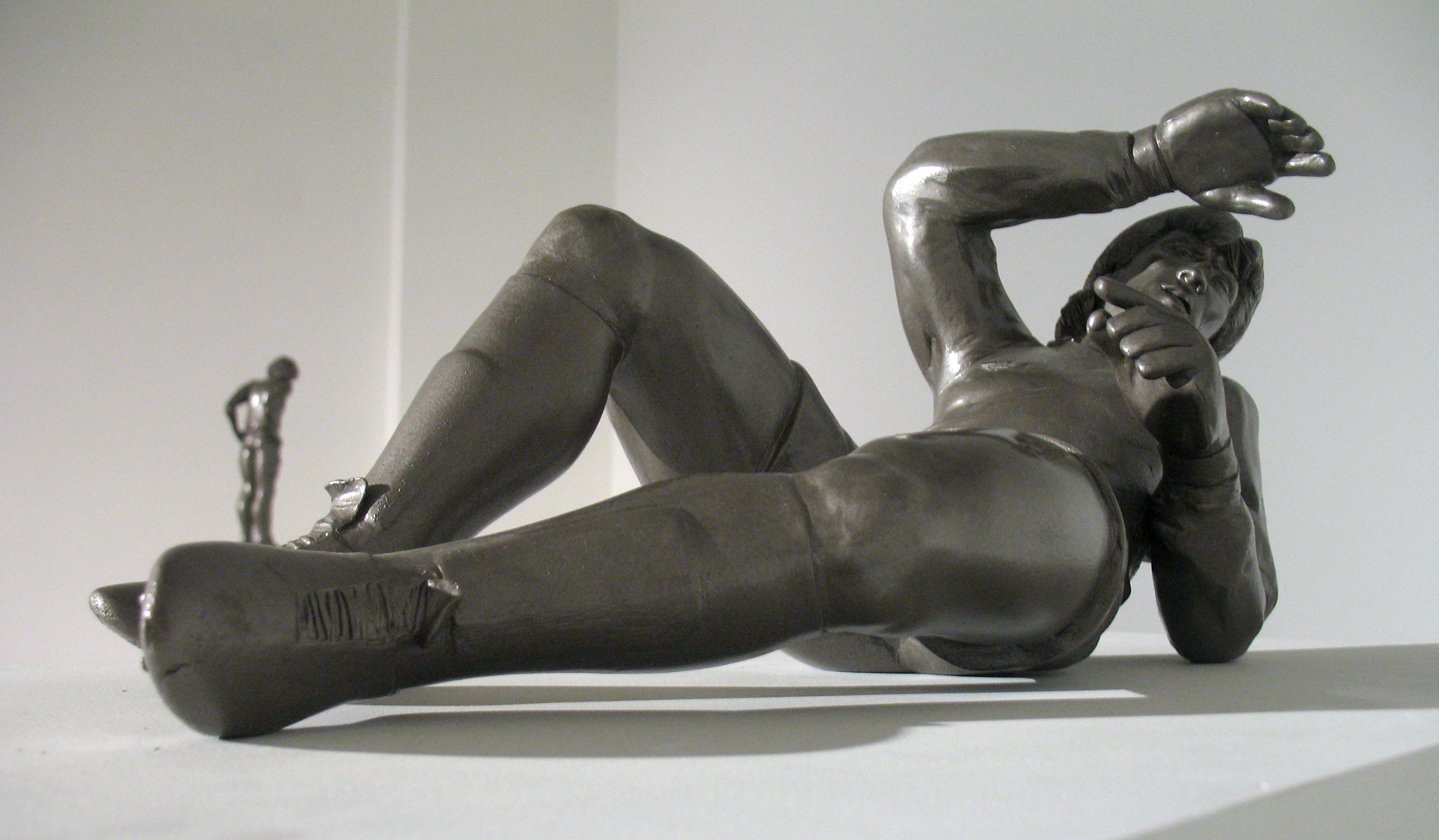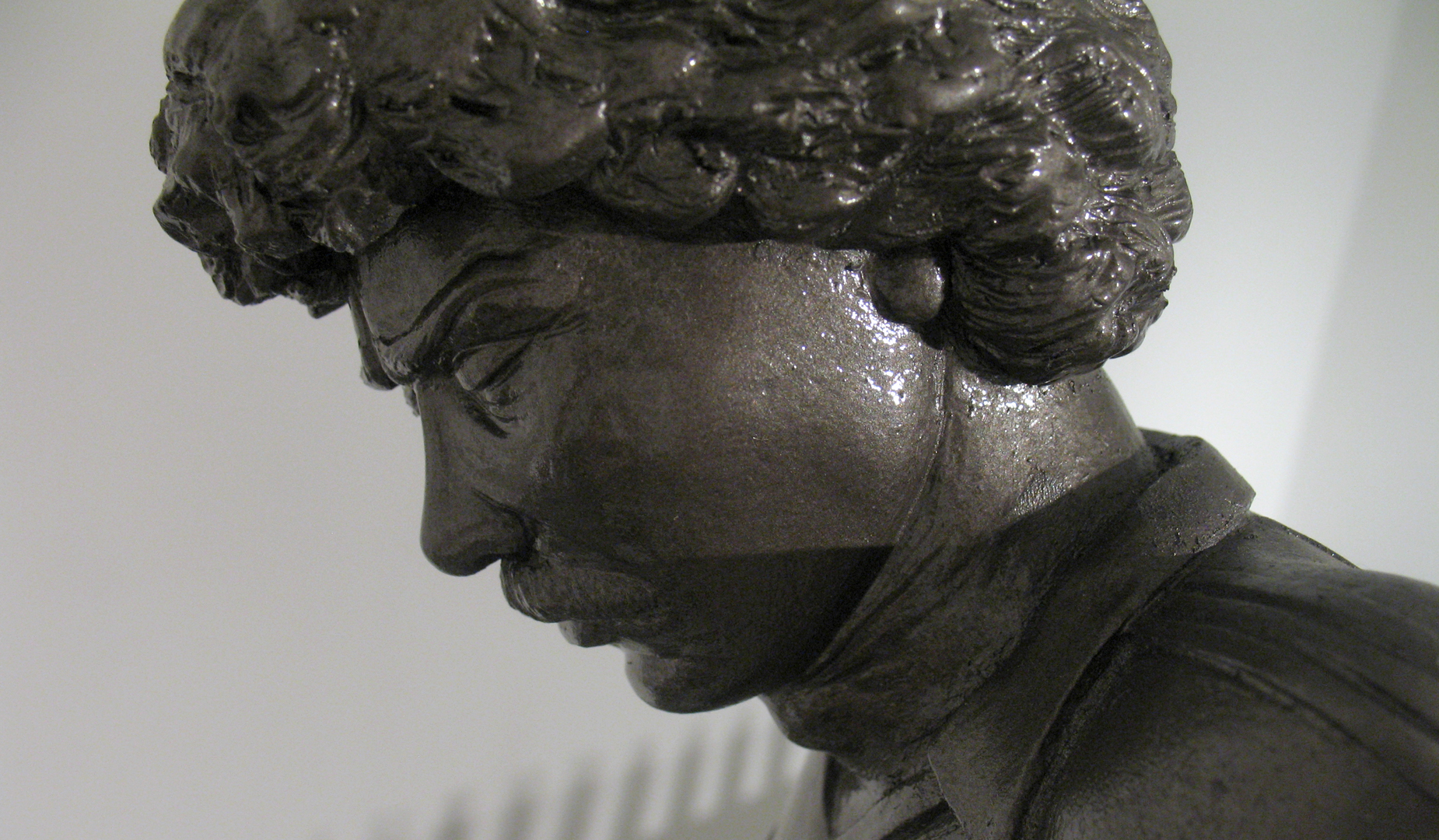
101 FORMAS DE NOMBRAR
UN ACÁ
101 WAYS TO NAME A HERE
UN ACÁ
101 WAYS TO NAME A HERE
MUSEO DE ARTE CONTEMPORÁNEO
FACULTAD DE ARTES, UNIVERSIDAD DE CHILE
SEDE QUINTA NORMAL, SANTIAGO, CHILE. 2014
MUSEUM OF CONTEMPORARY ART
FACULTY OF ARTS, UNIVERSITY OF CHILE
QUINTA NORMAL HEADQUARTER, SANTIAGO, CHILE. 2014
FACULTAD DE ARTES, UNIVERSIDAD DE CHILE
SEDE QUINTA NORMAL, SANTIAGO, CHILE. 2014
MUSEUM OF CONTEMPORARY ART
FACULTY OF ARTS, UNIVERSITY OF CHILE
QUINTA NORMAL HEADQUARTER, SANTIAGO, CHILE. 2014
FICHA TÉCNICA
Instalación. 101 piezas escultóricas
Técnica mixta: Pasta de modelar DAS, resina, pintura metálica, acrílico, óleo 700 x 600 cms. aprox.
TECHNICAL DATA SHEET
Instalation. 101 sculptural pieces
Mixed technique: DAS modeling paste, resin, metallic paint, acrylic, oil paint
700 x 600 cms. aprox.
El contexto que involucra esta obra fue el del mundial de fútbol Brasil 2014, a raíz de
ello el Museo MAC recibe la curatoría itinerante de Alfons Hug llamada “El juego solo
acaba cuando termina”.
La operación está enraizada en el gesto del camuflaje en tanto mixtura o híbrido. Utilizo lenguaje pop extraído del imaginario colectivo, en este caso, cruzando las nociones de caída artística a modo de Pietá y caída futbolística con tres iconos locales: penal frustrado de Cazzely, bengala del “Cóndor” Rojas y el gesto provocador televisado denominado “Pato Yáñez”(en honor a su autor). Sin duda el concepto que amarra la obra es el fracaso.
En esta línea el fracaso futbolístico es estetizado desde un juego matemático de carácter oulipiano; la elección de las piezas y la cantidad de ellas responde a una estructura que depende del número de jugadores en cancha y de la distribución de la
selección chilena en el año 1989, año del popular gesto de Yáñez.
La obra comprende 9 Patos Yáñez a escala, cada uno pintado acorde a algún elemento identitario local, estos sumados a las 2 Pietas: Rojas y Cazzely dan el número 11, propio de la cantidad de jugadores que inician un partido oficial y no ajeno a nuestra propia historia (11-9). Los 9 patos Yañez son repetidos en filas bajo la estructura 4-4-3 de Chile en el 89, completando una horda de 99 “patos”. El resultado de la suma (99 Yañez más 2 Pietá) da: 101, claramente es una cita a Raymond Queneau.
acaba cuando termina”.
La operación está enraizada en el gesto del camuflaje en tanto mixtura o híbrido. Utilizo lenguaje pop extraído del imaginario colectivo, en este caso, cruzando las nociones de caída artística a modo de Pietá y caída futbolística con tres iconos locales: penal frustrado de Cazzely, bengala del “Cóndor” Rojas y el gesto provocador televisado denominado “Pato Yáñez”(en honor a su autor). Sin duda el concepto que amarra la obra es el fracaso.
En esta línea el fracaso futbolístico es estetizado desde un juego matemático de carácter oulipiano; la elección de las piezas y la cantidad de ellas responde a una estructura que depende del número de jugadores en cancha y de la distribución de la
selección chilena en el año 1989, año del popular gesto de Yáñez.
La obra comprende 9 Patos Yáñez a escala, cada uno pintado acorde a algún elemento identitario local, estos sumados a las 2 Pietas: Rojas y Cazzely dan el número 11, propio de la cantidad de jugadores que inician un partido oficial y no ajeno a nuestra propia historia (11-9). Los 9 patos Yañez son repetidos en filas bajo la estructura 4-4-3 de Chile en el 89, completando una horda de 99 “patos”. El resultado de la suma (99 Yañez más 2 Pietá) da: 101, claramente es una cita a Raymond Queneau.
The context involved in this work was the 2014 Football World Cup in Brazil, as a
result of which the Contemporary Art Museum received the itinerant curatorship ofAlfons Hug, called “The game only ends when it ends”.
The statement is based on the gesture of camouflage as a mixture or hybrid. I use pop language taken from collective imaginary crossing the notions of artistic fall like la Pietá and the football failed performances of three local famous football players:
Cazzely’s frustrated penalty shootout, “Condor” Rojas’s flare incident, and the televised, provocative “Pato Yáñez” gesture, (named after his protagonist). Doubtless,the supporting concept of the work is failure.
In this line, the football failure is aestheticized from a mathematical game of Oulipian character. The choice and amount of pieces respond to a structure determined by the number of players on the field and the field distribution the Chilean national team hadin 1989, the year of Yáñez’s popular gesture.
The work includes 9 Patos Yañez at scale, each one painted according to some local identity element. 2 Pietas: Rojas and Cazzely are added to sum 11, which is the number of players at the beginning of an official match (11-9). The 9 Pato Yañez arerepeated in rows under Chile’s 4-4-3 game formation in 1989, completing a total of 99 “Pato Yañez”. The result of the sum (99 Yañez plus 2 Pietá) gives 101; clearly areference to Raymond Queneau.
The statement is based on the gesture of camouflage as a mixture or hybrid. I use pop language taken from collective imaginary crossing the notions of artistic fall like la Pietá and the football failed performances of three local famous football players:
Cazzely’s frustrated penalty shootout, “Condor” Rojas’s flare incident, and the televised, provocative “Pato Yáñez” gesture, (named after his protagonist). Doubtless,the supporting concept of the work is failure.
In this line, the football failure is aestheticized from a mathematical game of Oulipian character. The choice and amount of pieces respond to a structure determined by the number of players on the field and the field distribution the Chilean national team hadin 1989, the year of Yáñez’s popular gesture.
The work includes 9 Patos Yañez at scale, each one painted according to some local identity element. 2 Pietas: Rojas and Cazzely are added to sum 11, which is the number of players at the beginning of an official match (11-9). The 9 Pato Yañez arerepeated in rows under Chile’s 4-4-3 game formation in 1989, completing a total of 99 “Pato Yañez”. The result of the sum (99 Yañez plus 2 Pietá) gives 101; clearly areference to Raymond Queneau.







